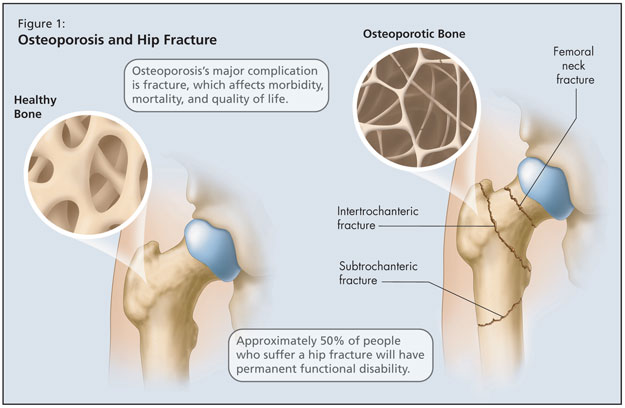
The Role of RANK/RANKL/OPG Pathway in Bone Loss: New Insights
Introduction
Chair/Speaker: Angela Juby, MBChB, LRCP, LRCS, LRCPS Associate Professor, Division of Geriatrics, Department of Medicine, University of Alberta, Edmonton, Alberta.
In her introduction to a panel of speakers discussing new horizons in the treatment of osteoporosis, incoming Canadian Geriatrics Society President Dr. Angela Juby first encouraged listeners to recall the definition of osteoporosis. It is a skeletal disorder characterized by compromised bone strength and increased fracture risk. In spite of all research advances in this area, clinicians currently have only a measure of bone density, not bone quality. However, bone strength is a calculus of both bone density and quality.
The International Osteoporosis Foundation has described the condition as a global health care problem, and the U.S. National Institutes of Health has named osteoporosis a disease with financial, physical, and psychosocial consequences of great impact on both individuals and the wider society. It is a prevalent condition, affecting ~200 million individuals worldwide, many of whom receive no treatment.1 Osteoporosis’s major complication is fracture, which affects morbidity, mortality, and quality of life (QOL). Hip and vertebral fractures are of foremost concern, and she noted that approximately 50% of people who suffer a hip fracture will have permanent functional disability.2
Dr. Juby cited data from the Canadian Multicentre Osteoporosis Study (CaMOS) that assessed the impact of osteoporosis on QOL by accounting for comparative baseline differences between various disease states. Looking at QOL measures in 4,000 patients, researchers found that osteoporosis was second only to arthritis in terms of life quality decrements—its impact was perceived to be worse than chronic obstructive pulmonary disease, heart disease, diabetes, and hypertension.3
In introducing the panel’s speakers, she emphasized the objectives for discussion, which included reviewing recent advances in the understanding of bone biology; highlighting the importance of the RANK/RANK Ligand/OPG pathway in regulating osteoclast function; and describing recent Phase 3 research data with RANK ligand inhibition in postmenopausal osteoporosis.

References:
-
Reginster J-Y, Burlet N. Osteoporosis: a still increasing prevalence. Bone 2006;38:S4–S9.
-
Gullberg B, Johnell O, Kanis JA. World-wide projections for hip fracture. Osteoporos Int 1997;7:407–13.
-
Sawka AM, Thabane L, Papaioannou A, et al. Health-related quality of life measurements in elderly Canadians with osteoporosis compared to other chronic medical conditions: a population-based study from the Canadian Multicentre Osteoporosis Study (CaMos). Osteoporos Int 2005;16:1836–40.
Sponsored by an unrestricted educational grant from Amgen Canada Inc.


